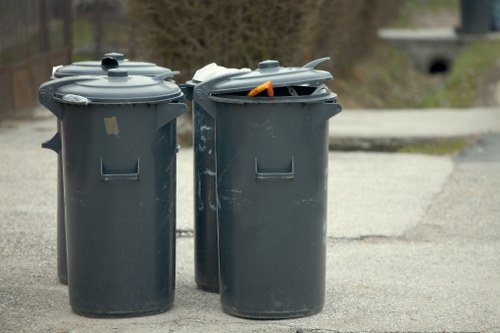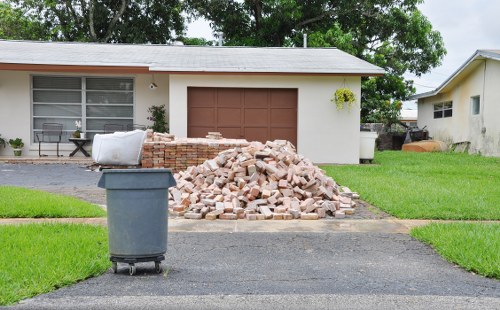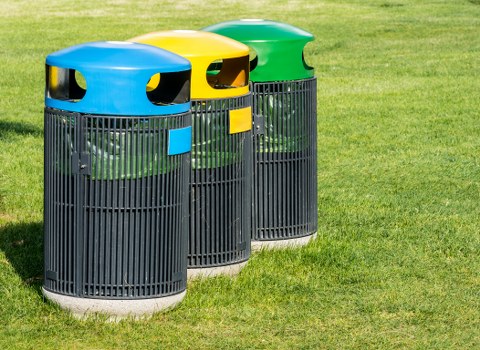Comprehensive Construction Waste Clearance in Osterley
Understanding Construction Waste Clearance

Construction projects, whether large or small, generate a significant amount of waste. Proper construction waste clearance is essential to maintain site safety, comply with regulations, and promote environmental sustainability. In Osterley, the demand for efficient waste clearance services has been on the rise, reflecting the area's growing construction activities.
The process involves the collection, transportation, and disposal or recycling of waste materials generated during construction. Effective waste clearance not only helps in keeping the workspace clean but also reduces the environmental footprint of construction activities.
Implementing a robust waste management plan can lead to cost savings, improved site efficiency, and enhanced reputation for responsible construction practices.
Types of Construction Waste

Construction waste encompasses a variety of materials, each requiring specific handling and disposal methods. Common types include:
- Concrete and Masonry: Leftover concrete, bricks, and blocks.
- Wood: Scraps from framing, flooring, and finishes.
- Metals: Including steel beams, pipes, and rebar.
- Plastics: Packaging materials, piping, and fittings.
- Drywall and Insulation: Cut-offs and excess materials.
- Hazardous Materials: Paints, solvents, and asbestos-containing materials.
Proper segregation of these materials is crucial for effective recycling and disposal. It helps in minimizing the volume of waste that ends up in landfills and promotes the reuse of recyclable materials.
By understanding the different types of construction waste, property owners and contractors in Osterley can make informed decisions about waste management strategies.
Benefits of Professional Waste Clearance

Engaging professional waste clearance services offers numerous advantages. These include:
- Efficiency: Professionals have the expertise and equipment to handle large volumes of waste quickly.
- Compliance: Ensuring that waste disposal meets local regulations and environmental standards.
- Safety: Reducing the risk of accidents on site by managing debris and hazardous materials properly.
- Cost-Effectiveness: Preventing potential fines and reducing the need for additional labor or equipment.
- Environmental Protection: Promoting recycling and reducing the overall environmental impact of construction activities.
In Osterley, where construction projects are diverse and dynamic, professional waste clearance services play a pivotal role in maintaining project timelines and ensuring sustainable practices.
Choosing the right service provider ensures that waste is managed responsibly, aligning with both legal requirements and societal expectations for environmental stewardship.
Regulations and Compliance

Construction waste clearance in Osterley must adhere to stringent local and national regulations. These regulations are designed to protect the environment, public health, and ensure that waste is managed responsibly.
Key regulatory considerations include:
- Waste Classification: Properly identifying and classifying waste streams to determine appropriate disposal methods.
- Licensing: Ensuring that waste clearance companies are licensed and authorized to handle specific types of waste.
- Documentation: Maintaining accurate records of waste generation, transportation, and disposal for compliance audits.
- Hazardous Waste Management: Special handling and disposal requirements for hazardous materials like asbestos, lead, and chemicals.
- Recycling Mandates: Obligations to recycle certain materials, reducing the reliance on landfills.
Non-compliance can result in hefty fines, project delays, and reputational damage. Therefore, partnering with a knowledgeable and compliant waste clearance provider is essential for construction projects in Osterley.
Staying updated with changing regulations ensures that waste management practices remain effective and legally sound.
The Waste Clearance Process

The process of construction waste clearance typically involves several critical steps:
- Assessment: Evaluating the volume and types of waste generated to determine the appropriate clearance strategy.
- Segregation: Separating recyclable materials from non-recyclable waste to optimize disposal and recycling efforts.
- Collection: Gathering waste materials from the construction site using specialized equipment.
- Transportation: Moving the collected waste to designated disposal or recycling facilities.
- Disposal/Recycling: Properly disposing of non-recyclable waste and sending recyclable materials to appropriate processing centers.
Each step requires careful planning and execution to ensure that waste is managed efficiently and responsibly. Professional waste clearance services in Osterley are equipped to handle each phase with expertise and compliance.
Implementing a streamlined waste clearance process can significantly reduce the environmental impact and improve the overall sustainability of construction projects.
Recycling and Disposal Options
Recycling plays a pivotal role in construction waste management. By diverting waste from landfills, construction projects can contribute to environmental conservation and resource efficiency.
Commonly recycled construction materials include:
- Metal: Steel and aluminum can be melted down and reused in new construction projects.
- Wood: Reclaimed wood can be processed and used for various purposes.
- Concrete: Crushed concrete can serve as aggregate for new concrete or road base.
- Plastics: Certain plastics can be recycled into new building materials.
For disposal, non-recyclable materials must be handled in accordance with environmental regulations. This often involves transporting the waste to authorized landfills or specialized disposal facilities.
In Osterley, local waste management facilities offer various options catering to different types of construction waste, ensuring that materials are disposed of responsibly.
Adopting recycling and proper disposal practices not only benefits the environment but can also lead to cost savings and enhanced project sustainability.
Choosing the Right Waste Clearance Company
Selecting a reliable waste clearance company is crucial for the success of construction projects in Osterley. Consider the following factors when making your choice:
- Experience: Look for companies with a proven track record in handling construction waste clearance.
- Licensing and Certification: Ensure the company complies with local regulations and holds necessary certifications.
- Services Offered: Comprehensive services including assessment, segregation, collection, transportation, and disposal.
- Recycling Capabilities: Preference for companies that prioritize recycling and sustainable practices.
- Customer Reviews: Positive feedback and testimonials indicating reliability and quality of service.
- Pricing: Transparent and competitive pricing structures without hidden costs.
In Osterley, numerous waste clearance providers offer varied services. Conducting thorough research and comparing options can help in selecting a partner that aligns with your project's needs and sustainability goals.
Building a strong partnership with the right waste clearance company can enhance project efficiency and ensure compliance with environmental standards.
Cost Considerations
Managing the costs associated with construction waste clearance is vital for maintaining project budgets. Several factors influence the overall cost:
- Volume of Waste: Higher volumes typically incur higher disposal and transportation fees.
- Type of Waste: Hazardous or specialized waste may require additional handling and disposal methods, increasing costs.
- Frequency of Clearance: Regular clearance schedules can optimize costs and prevent excessive accumulation of waste.
- Recycling Requirements: Services that prioritize recycling may have different pricing structures.
- Location: Proximity to waste disposal facilities can affect transportation costs.
It's essential to obtain detailed quotes from waste clearance providers in Osterley, understanding what services are included. Transparency in pricing helps in making informed decisions and avoiding unexpected expenses.
Furthermore, investing in efficient waste management practices can lead to long-term savings by reducing potential fines and optimizing resource utilization.
Environmental Impact
Construction waste has a significant environmental impact if not managed properly. Improper disposal contributes to land pollution, greenhouse gas emissions, and resource depletion.
By implementing effective waste clearance strategies, construction projects in Osterley can mitigate these impacts. Recycling and reusing materials reduce the demand for new resources, conserving energy and lowering carbon footprints.
Moreover, responsible waste management supports the circular economy, where materials are kept in use for as long as possible, minimizing waste generation.
Environmental sustainability is not just a regulatory requirement but also a societal expectation. Demonstrating commitment to eco-friendly practices can enhance the reputation of construction firms and attract environmentally conscious clients.
Adopting green waste clearance practices aligns with global sustainability goals, contributing to a healthier planet.
Implementing a Waste Management Plan
A well-structured waste management plan is essential for effective construction waste clearance in Osterley. Key elements of such a plan include:
- Waste Assessment: Identifying and quantifying the types and amounts of waste generated.
- Segregation Strategies: Implementing methods to separate recyclable and non-recyclable materials at the source.
- Clearance Schedule: Establishing timelines for regular waste removal to prevent buildup.
- Responsible Disposal: Partnering with licensed disposal facilities that adhere to environmental regulations.
- Recycling Initiatives: Encouraging the reuse and recycling of materials to minimize waste.
By outlining clear procedures and assigning responsibilities, a waste management plan ensures that waste clearance is handled systematically and efficiently throughout the project lifecycle.
Continuous monitoring and evaluation of the waste management plan can lead to improvements and increased sustainability in construction practices.
Technological Innovations in Waste Clearance
Advancements in technology have revolutionized construction waste clearance, making it more efficient and sustainable.
Innovative solutions include:
- Automated Sorting Systems: Utilizing robotics and AI to segregate waste materials accurately and quickly.
- Advanced Recycling Technologies: Improving the processing of complex materials, allowing for higher recycling rates.
- Waste Tracking Software: Implementing digital tools to monitor waste generation, movement, and disposal in real-time.
- Eco-Friendly Disposal Methods: Developing alternative disposal techniques that reduce environmental impact.
- Internet of Things (IoT) Devices: Using sensors to optimize waste collection schedules and routes.
These technological innovations enhance the effectiveness of waste clearance operations, ensuring compliance with regulations and promoting sustainability.
In Osterley, adopting such technologies can set construction projects apart, demonstrating a commitment to modern and responsible waste management practices.
Case Studies: Success Stories in Osterley
Numerous construction projects in Osterley have successfully implemented effective waste clearance strategies, showcasing the benefits of professional services.
For instance, a recent commercial development incorporated a comprehensive waste management plan that resulted in a 40% reduction in landfill waste. By collaborating with a local waste clearance company, the project achieved high recycling rates and maintained compliance with environmental regulations.
Another example involves a residential building project that utilized automated sorting systems to streamline waste segregation, significantly enhancing operational efficiency and reducing costs.
These case studies highlight the tangible advantages of investing in quality waste clearance services, including cost savings, environmental benefits, and improved project timelines.
Learning from these successes can inspire other projects in Osterley to adopt best practices in construction waste management.
Future Trends in Construction Waste Clearance
The construction industry is continually evolving, with waste clearance being a critical area of focus. Future trends indicate a shift towards more sustainable and technologically advanced practices.
Emerging trends include:
- Increased Recycling and Reuse: Greater emphasis on recycling materials and finding innovative uses for waste products.
- Integration of AI and Machine Learning: Enhancing waste prediction, segregation, and management through intelligent systems.
- Green Building Certifications: Aligning waste clearance practices with certifications like LEED to promote sustainability.
- Modular Construction: Reducing waste by using prefabricated components that minimize on-site material usage.
- Circular Economy Models: Designing construction projects with the end-of-life of materials in mind, ensuring continuous material flow.
Staying abreast of these trends allows construction projects in Osterley to adopt innovative waste management strategies, ensuring long-term sustainability and compliance.
Embracing future trends not only benefits the environment but also enhances operational efficiency and project viability.
Conclusion
Effective construction waste clearance is a cornerstone of responsible construction practices in Osterley. It ensures compliance with regulations, promotes environmental sustainability, and contributes to the overall efficiency and success of construction projects.
By understanding the types of waste, leveraging professional services, and implementing comprehensive waste management plans, construction firms can significantly reduce their environmental footprint and operational costs.
As the industry evolves, embracing technological innovations and sustainable practices will be essential in shaping the future of construction waste management.
Contact us today to learn more about our specialized construction waste clearance services in Osterley and how we can support your next project.